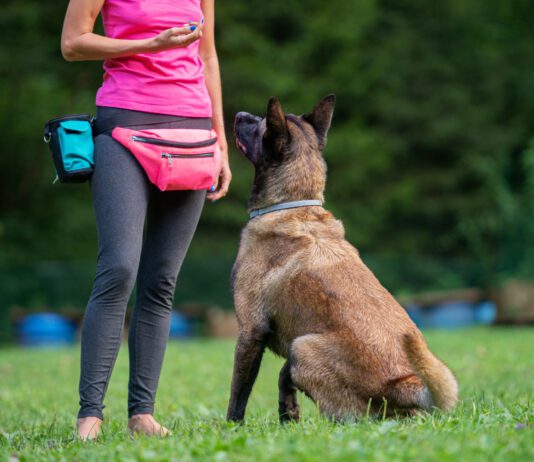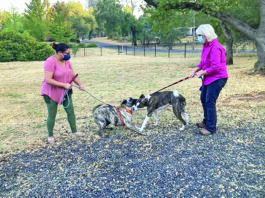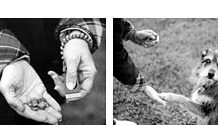Promoting Positive Training Methods
Every so often, at a training demonstration or event promoting positive training methods, a skeptical spectator will ask me whether positive training methods can be used for preparing dogs for all types of careers. I know where they are usually going with this question. Their real question is, “I know you can teach dogs to do cute little tricks with treats and stuff, but what about when you want a reliable dog, like an obedience competitor, a protection dog, or a police dog?” Their assumption is that in order to teach a dog to respond without fail, to sharply execute the handler’s every command, you will have to use force- and fear-based methods at some point in the dog’s education.
Feeling Alone in Group Training Class
Group training classes are a mixed bag of pros and cons. And I say this as someone who has made a fair amount of my annual income by teaching group training classes. I also attend group classes with my own dog. By design, the ideal candidate" for a positive-reinforcement group manners class is the generally happy-go-lucky
Dog House Rules
Once upon a time, societal norms dictated that if pet dogs failed to comply with strict rules for their behavior indoors, they were banished...
Great Solutions for Dog Crate Problems
I first used a crate as a canine management tool in the early 1980s. I was a little skeptical of the concept (Put my dog in a box? What?")
The 12 Rules of Rocket Recall
How do you perfect your dog's recall skills? Practice! Use the reinforcers that have the highest value for your dog for recall practice and reward generously.
Training Your Dog to Learn
Operant conditioning and classical conditioning, though mostly applied to human psychology nowadays, are structures that were first developed in observing dog behavior. They are somewhat opposite methods of behavioral modification, however both are effective in training animals (and young children). They work simply to reverse bad habits and teach good ones. Read on to learn the difference, and get your dog obeying all your commands, every time.
Playing With Your Dog Increases Socialization and Relationships
Different dogs have different play styles. If I tried to play patty-paws with our Australian Kelpie, she would slink away in horror. Her idea of a rousing good time is to help me bring the horses in for their evening grain. Our Cattle Dog mix, Tucker, would rather fetch a stick or a tennis ball, or go jump in the neighbor's pond. Our Scottish Terrier's response to the paws activity would be a bored Whatever . . . " but he'd be delighted to engage in a game of "Let's roust critters out of the drainage pipe!" "
Tethered for Success: The Do’s and Don’ts of Dog Tethers
I’ve long been a proponent of the appropriate, judicious use of tethers for dog training and management. This doesn’t mean tying up your dog...
Reinforce Your Dog’s Good Behavior
The best training tip out there is so simple it likely slips your mind: Catch your dog doing something right.We all notice when our...
Clicker Training and Trick Training Your Dog
one
can shape a new trick."
can shape a new trick."
Dog Harness vs Collar: Which is Better?
Dog harnesses vs collars - which is safer? There are many types of collars and harnesses on the market, and some serve specific purposes.
Counter-Conditioning and Desensitization for Reducing Dog Reactvity
Counter-conditioning involves changing your dog’s association with a scary or arousing stimulus from negative to positive. Desensitization is starting with a very low-level intensity of aversive stimulus until the dog habituates to (or changes his association with) the aversive, and then gradually increasing the strength until the dog is comfortable with the stimulus at full intensity. The easiest way to give most dogs a positive association and to help them become comfortable with a stimulus is with very high-value, really yummy treats. I like to use chicken – canned, baked, or boiled; most dogs love chicken. Here’s how the CC&D process works.

















